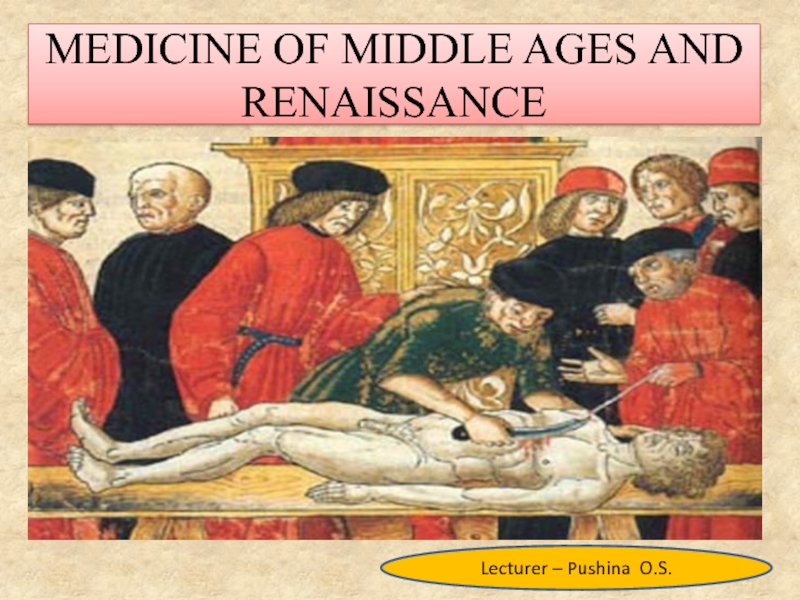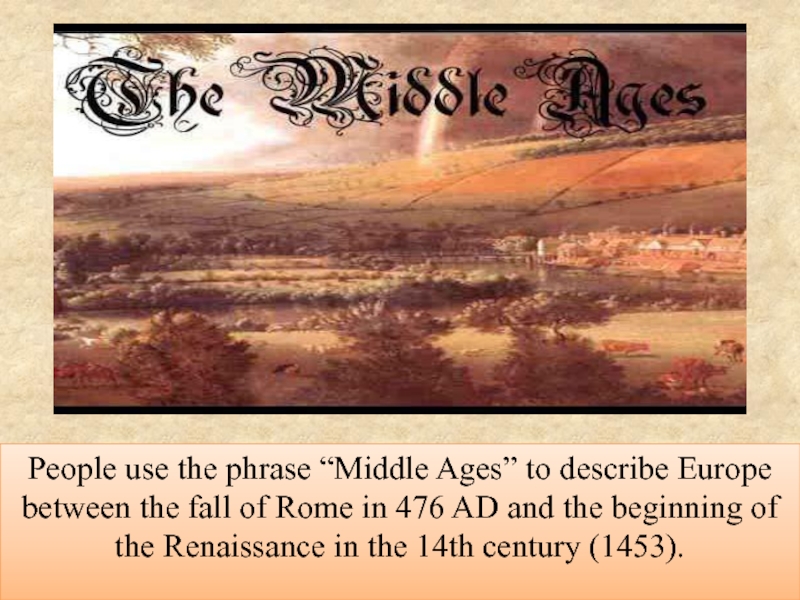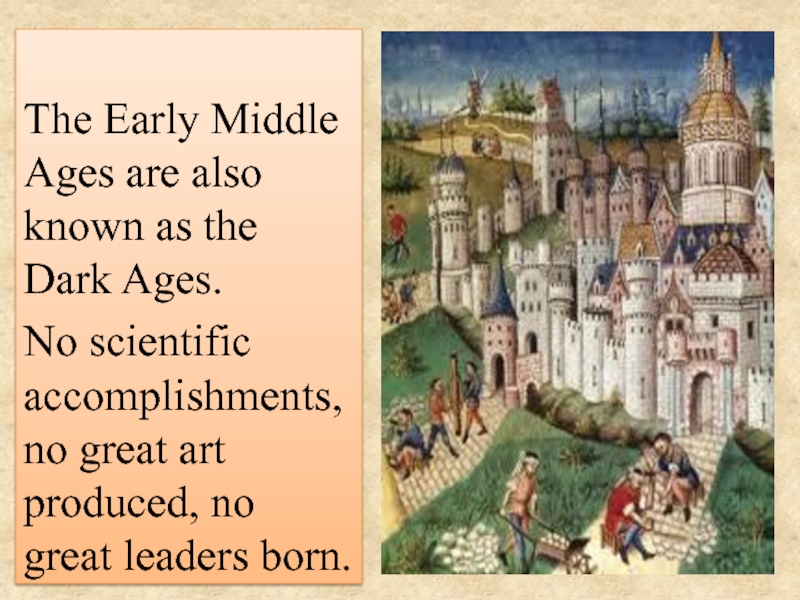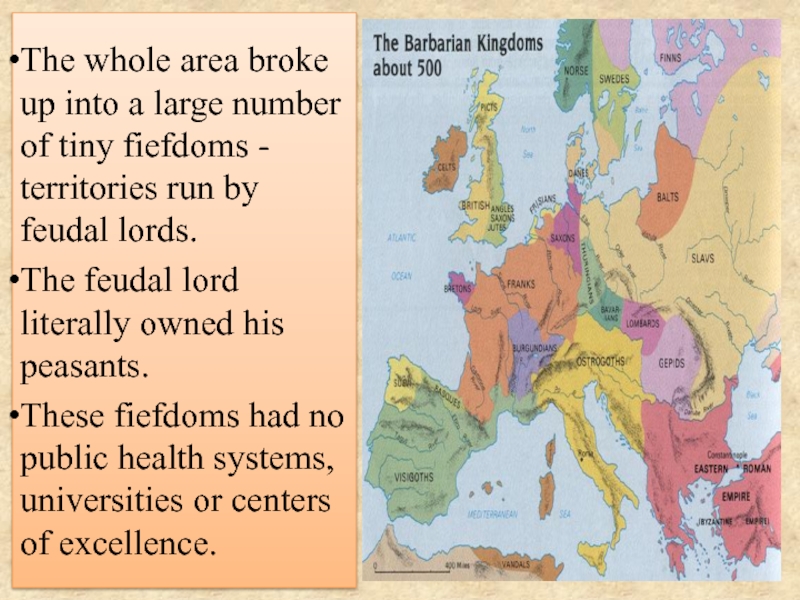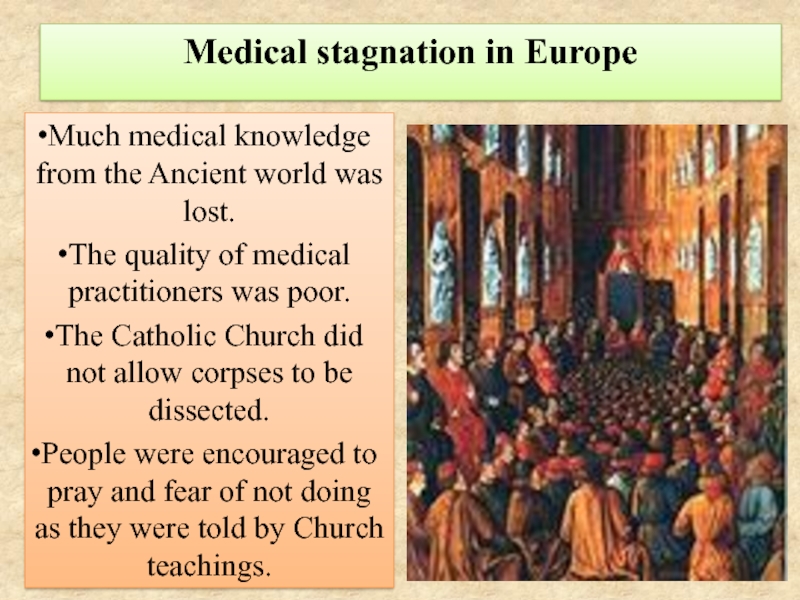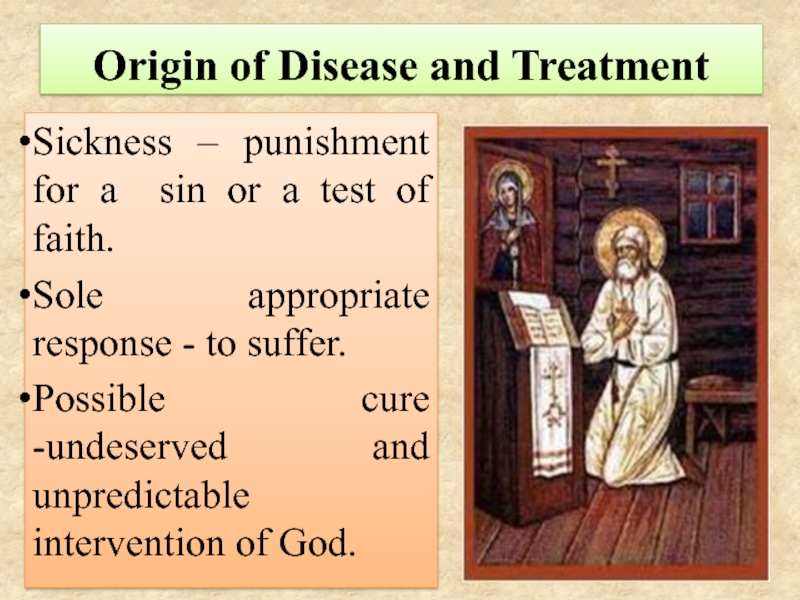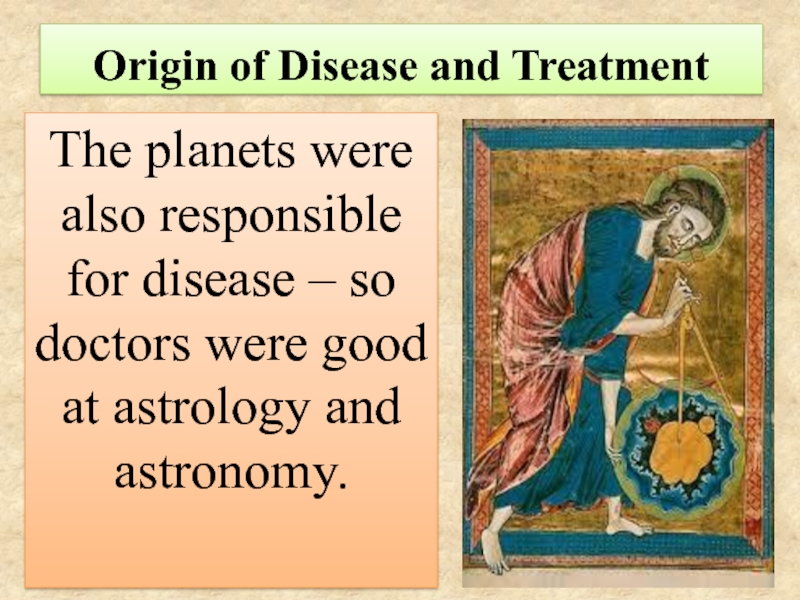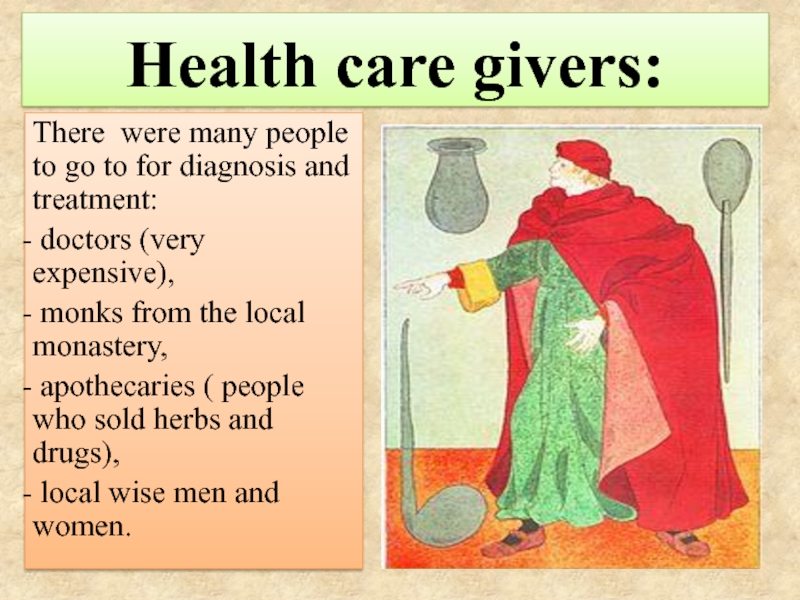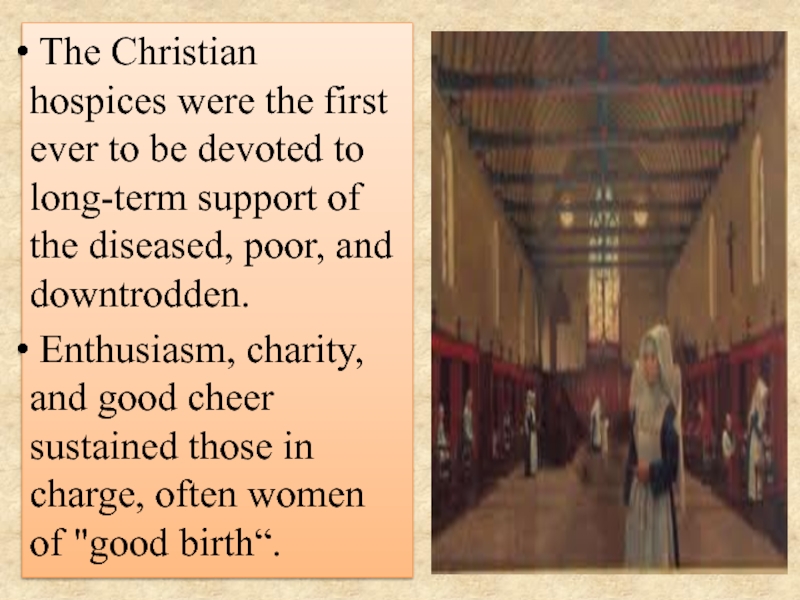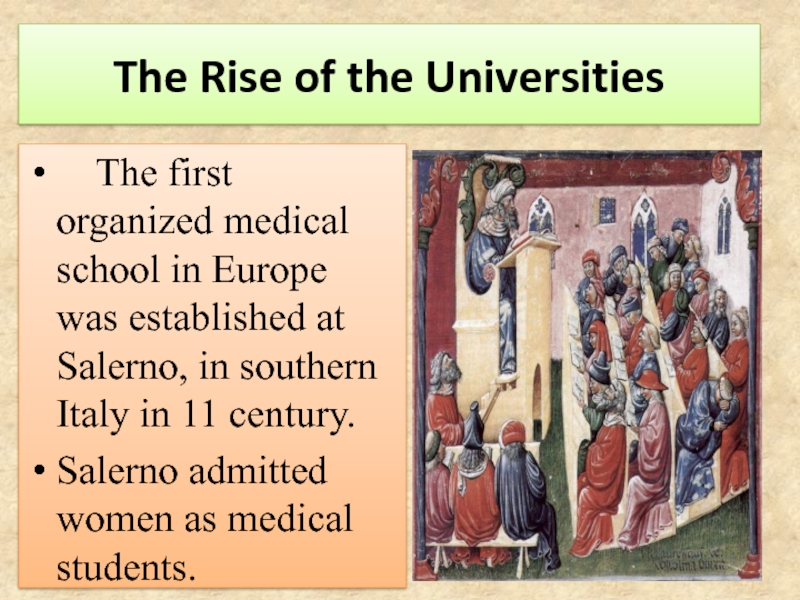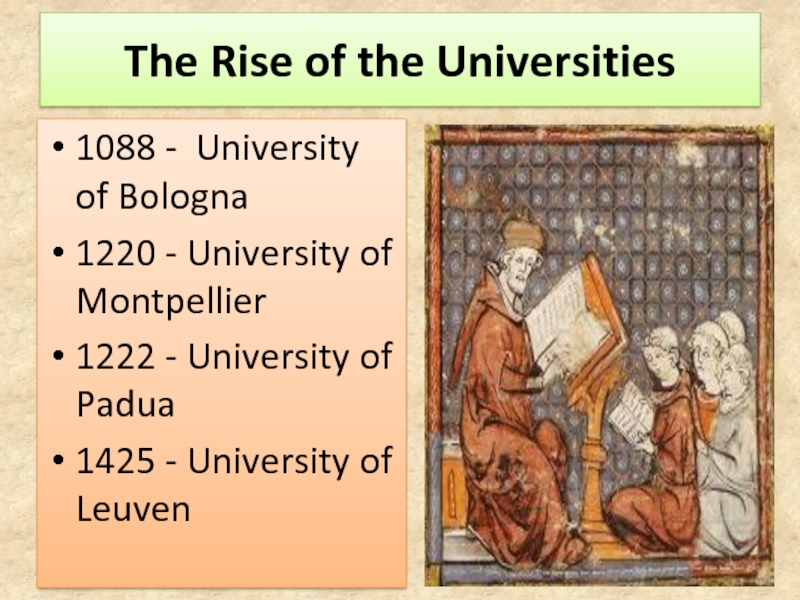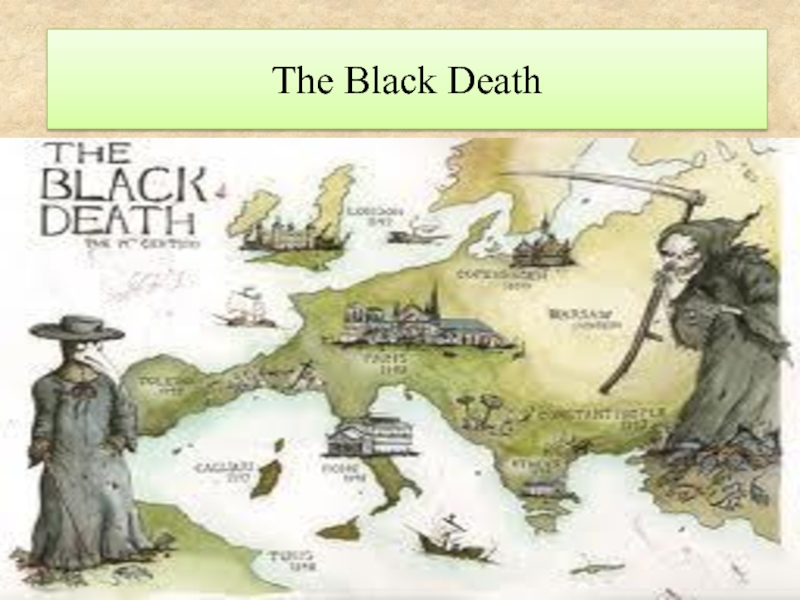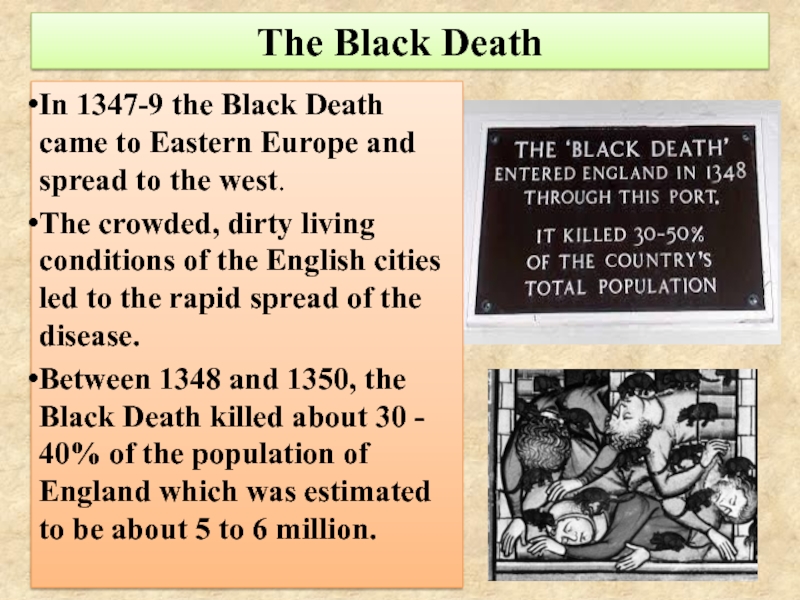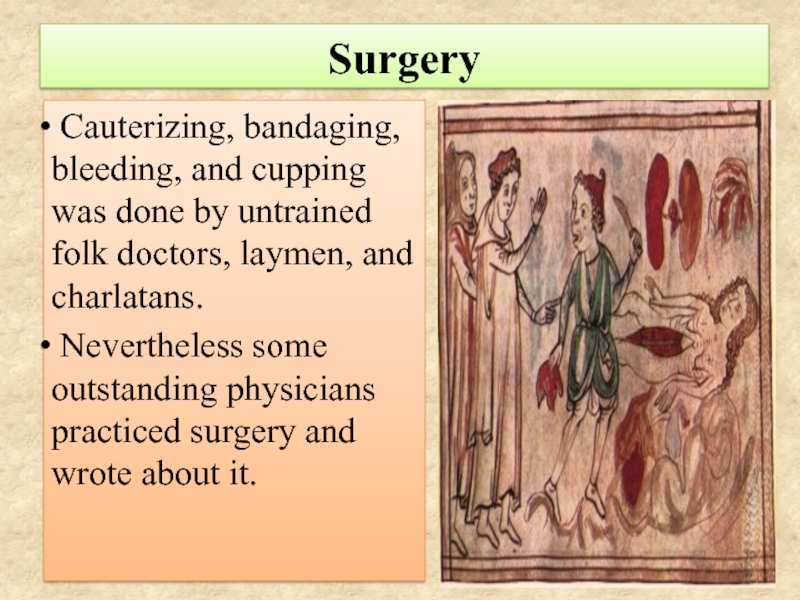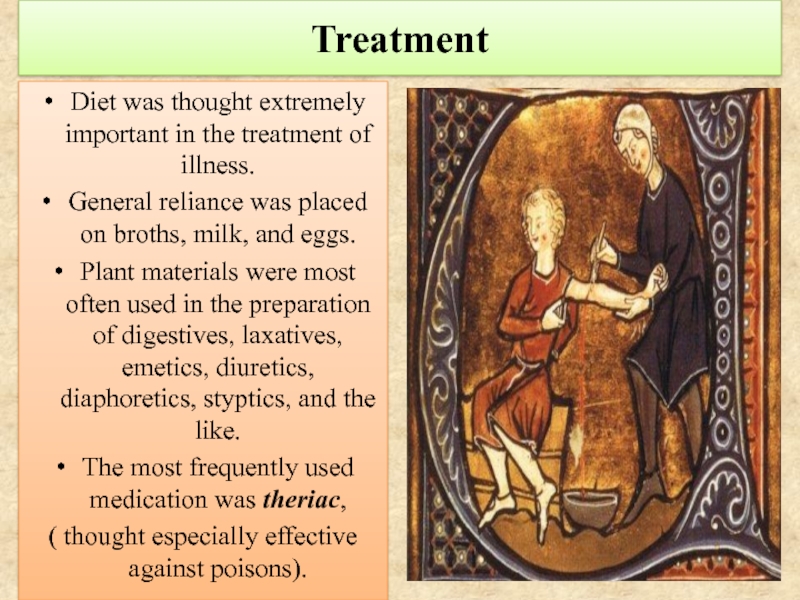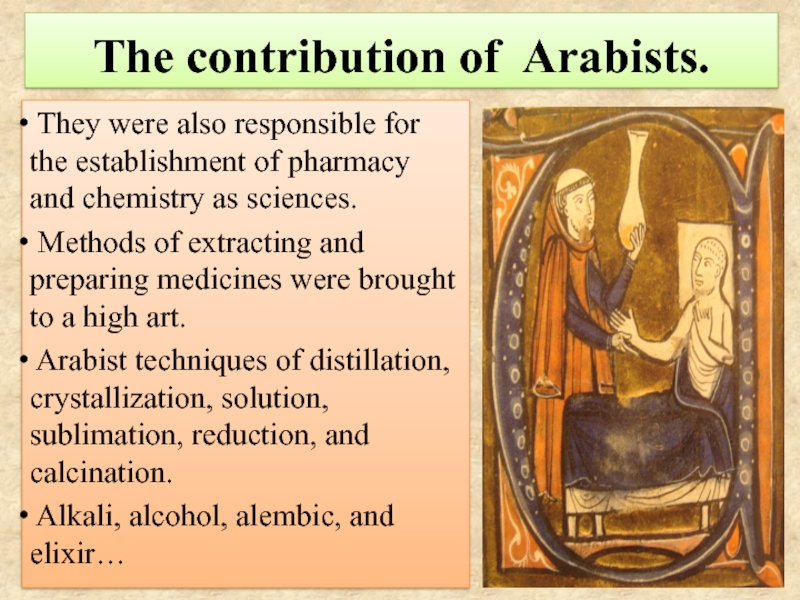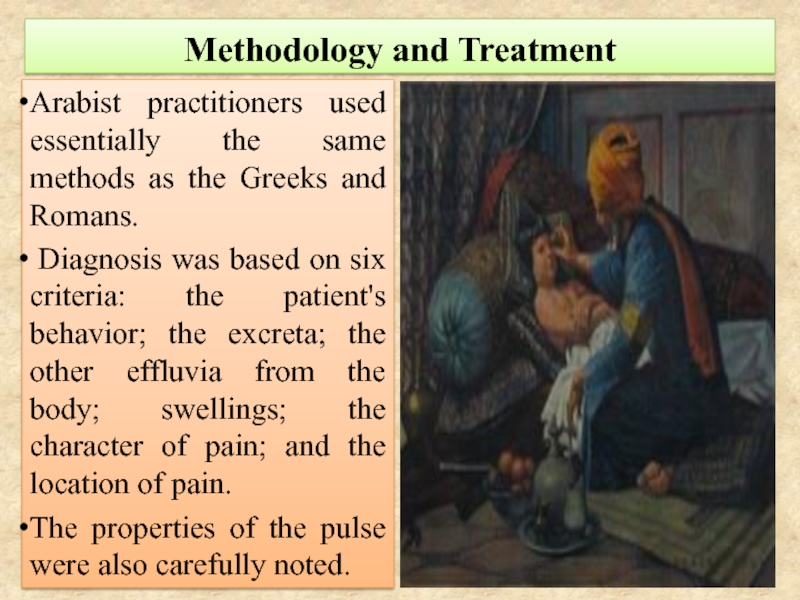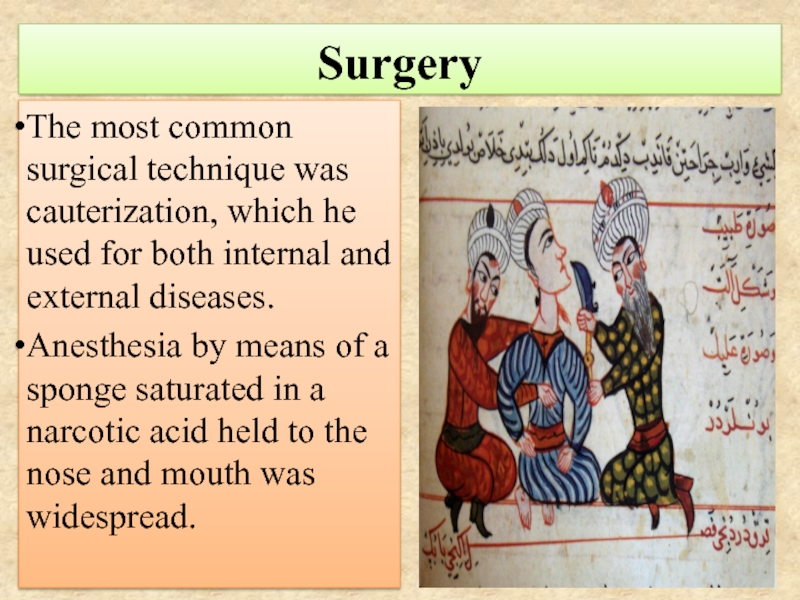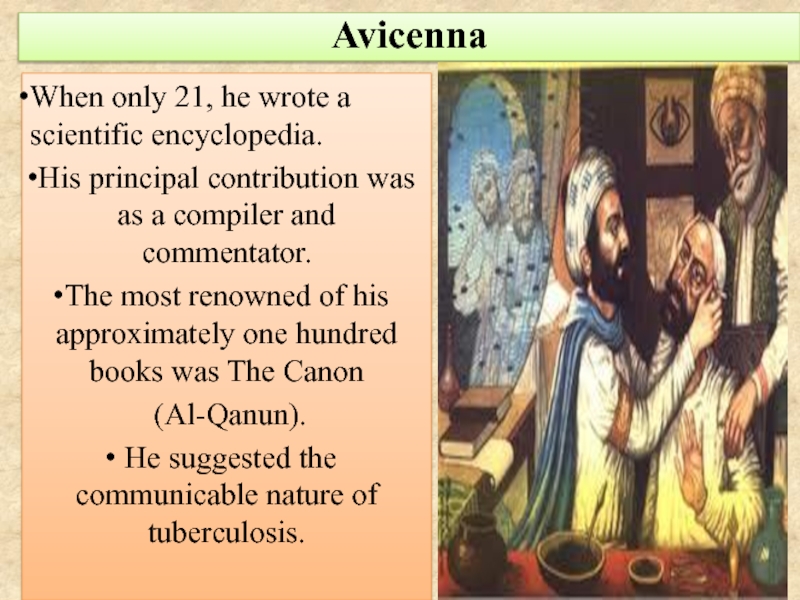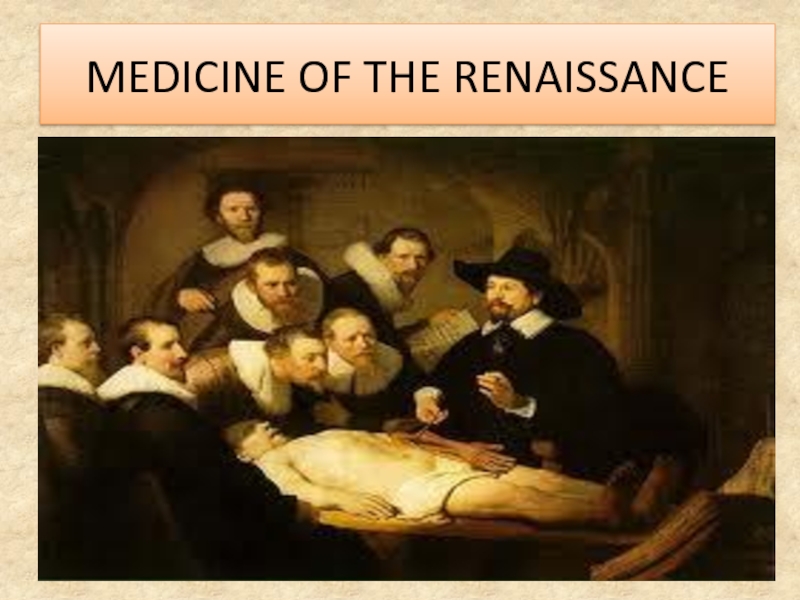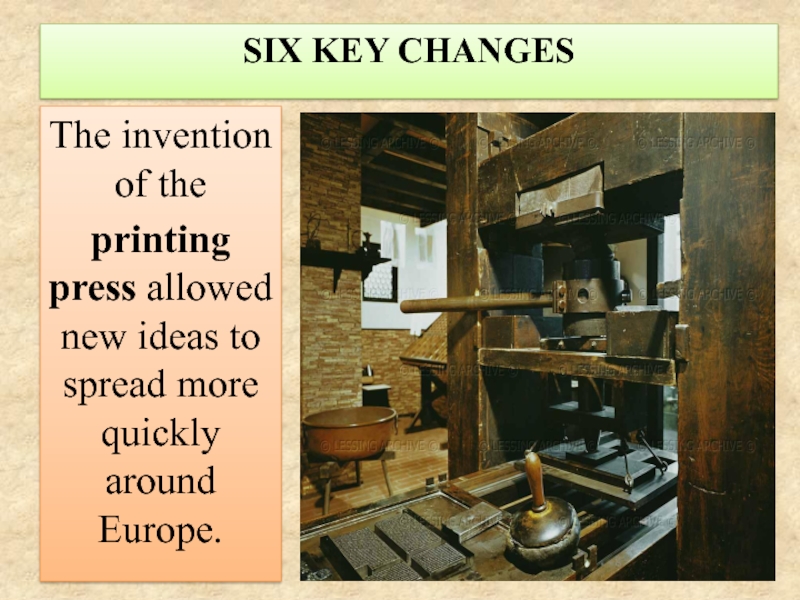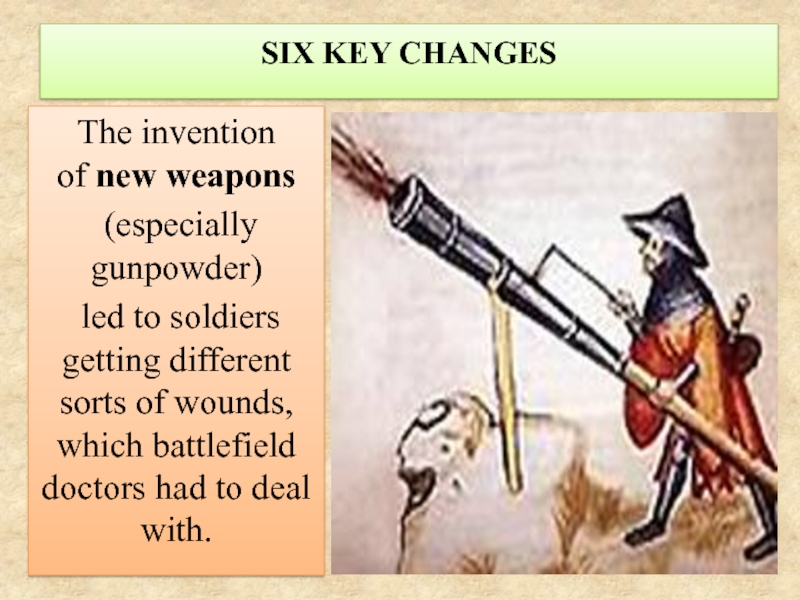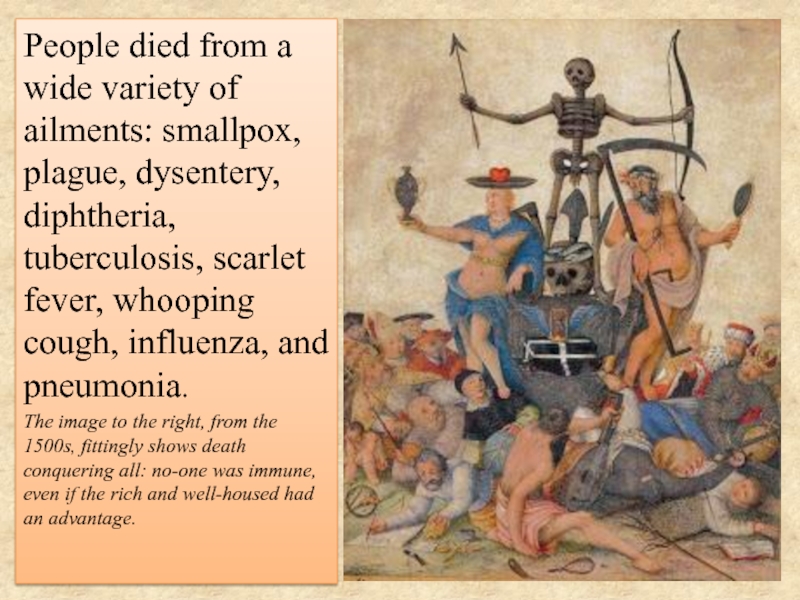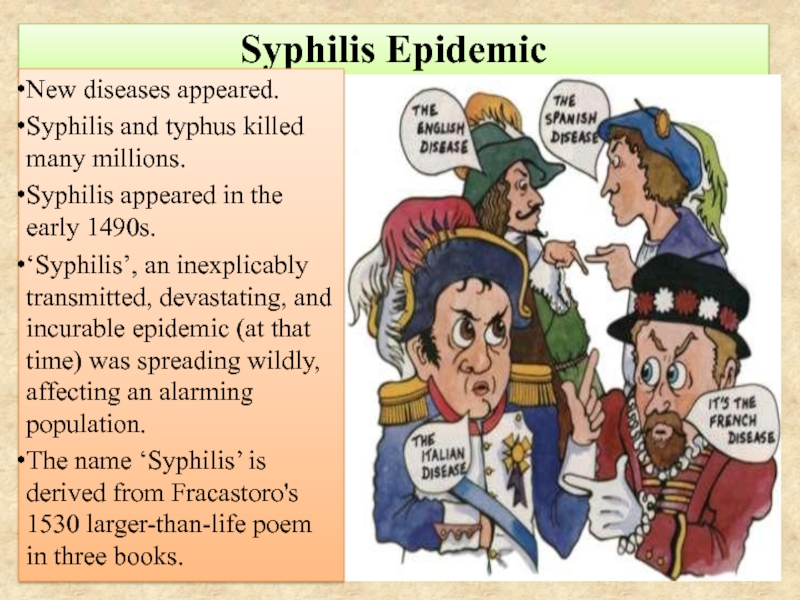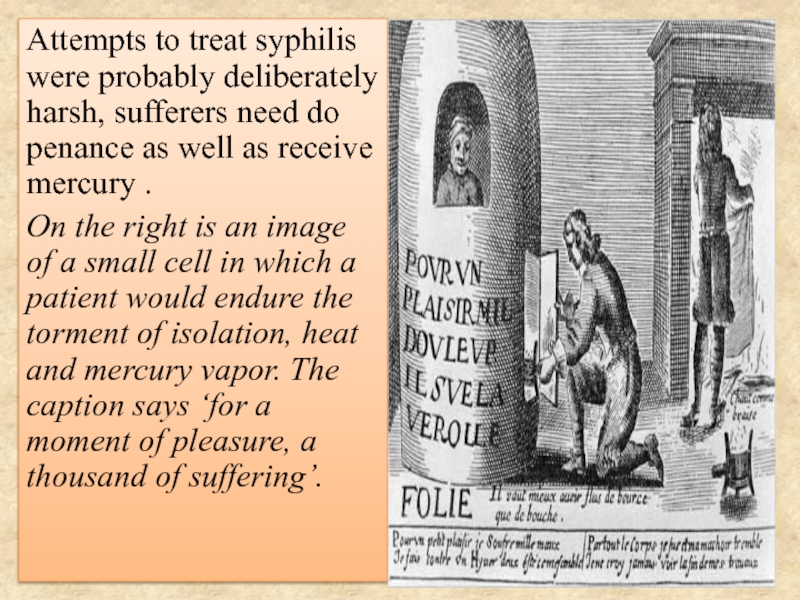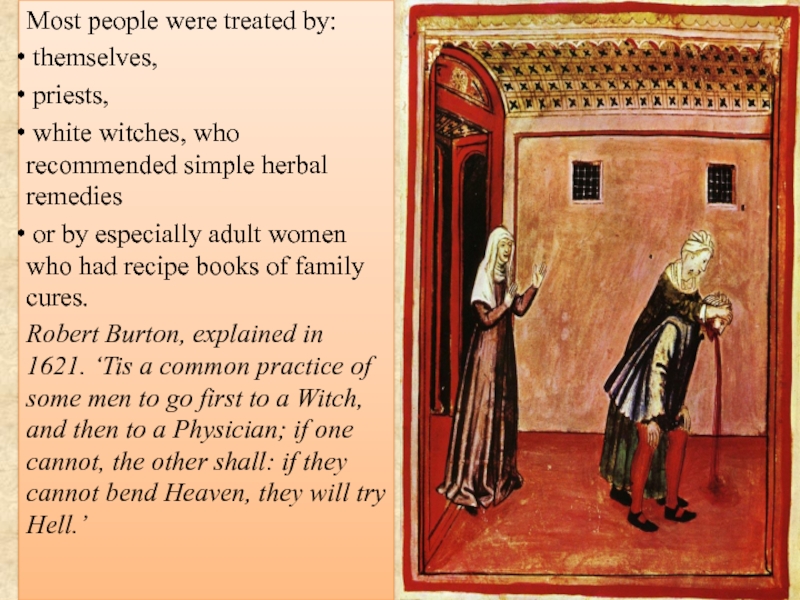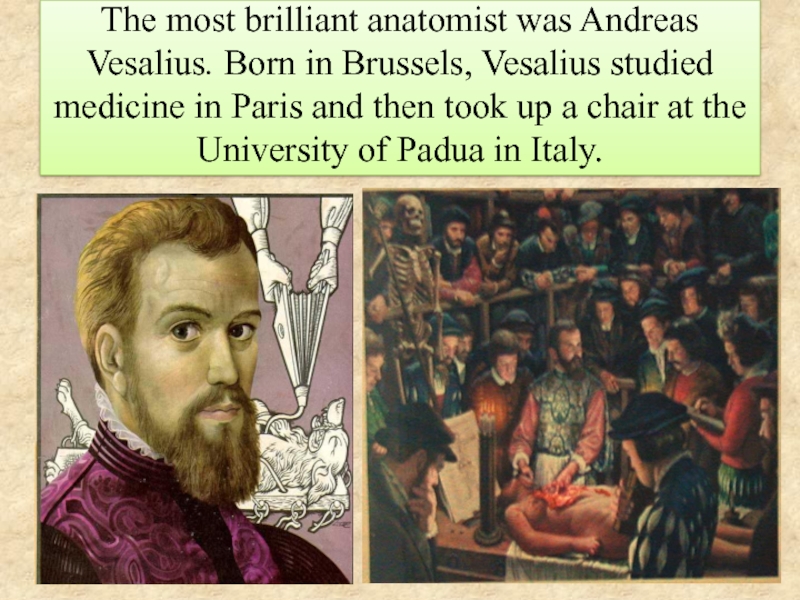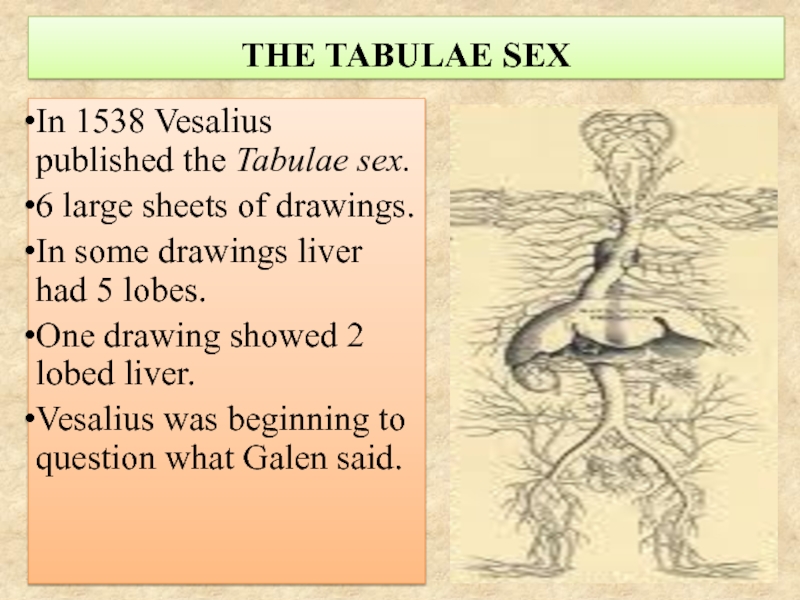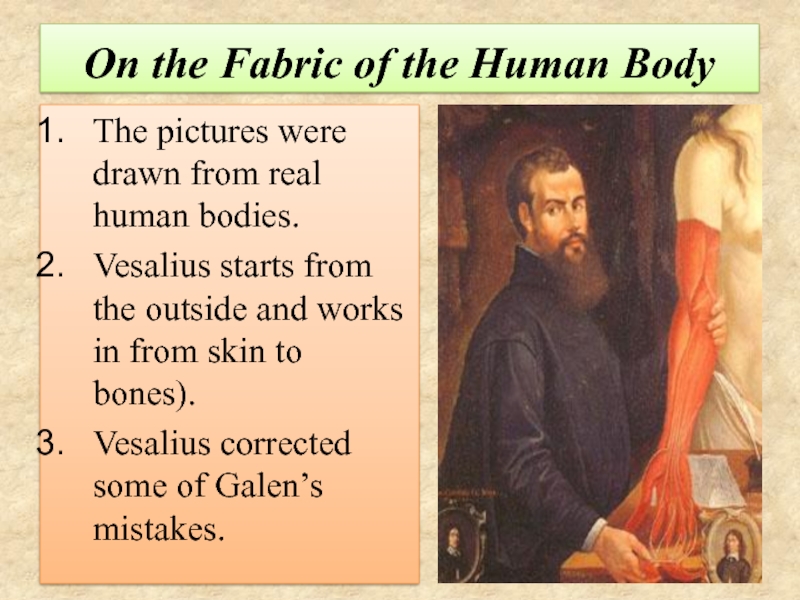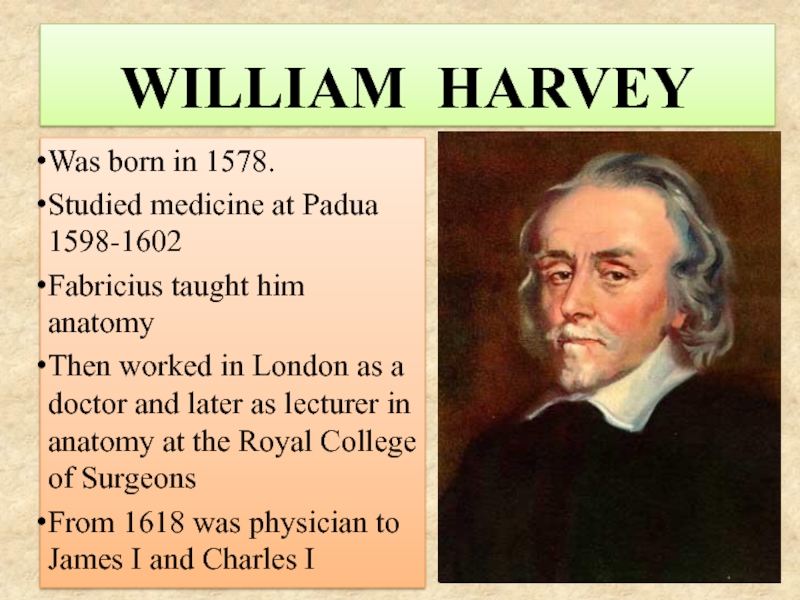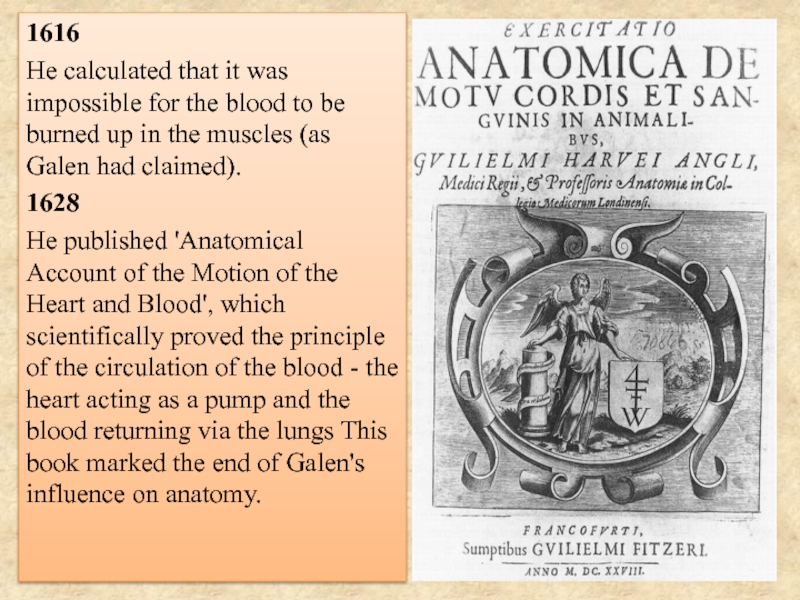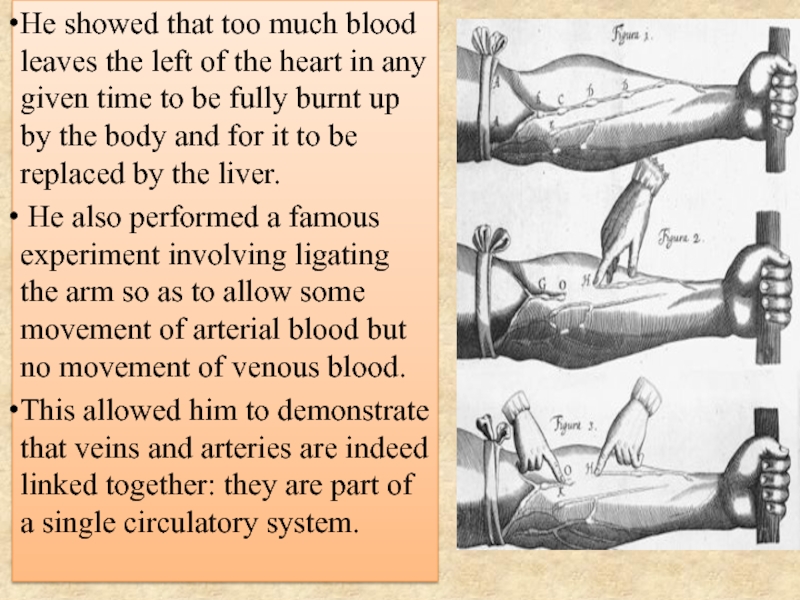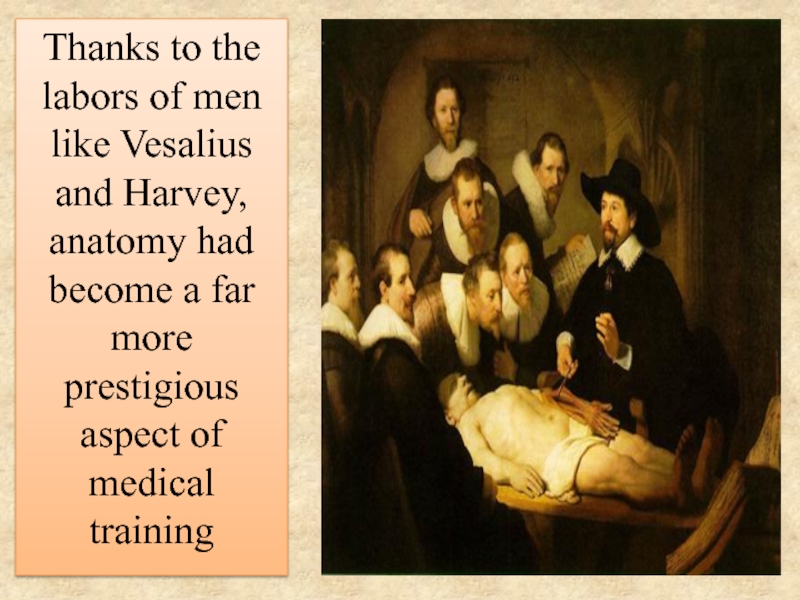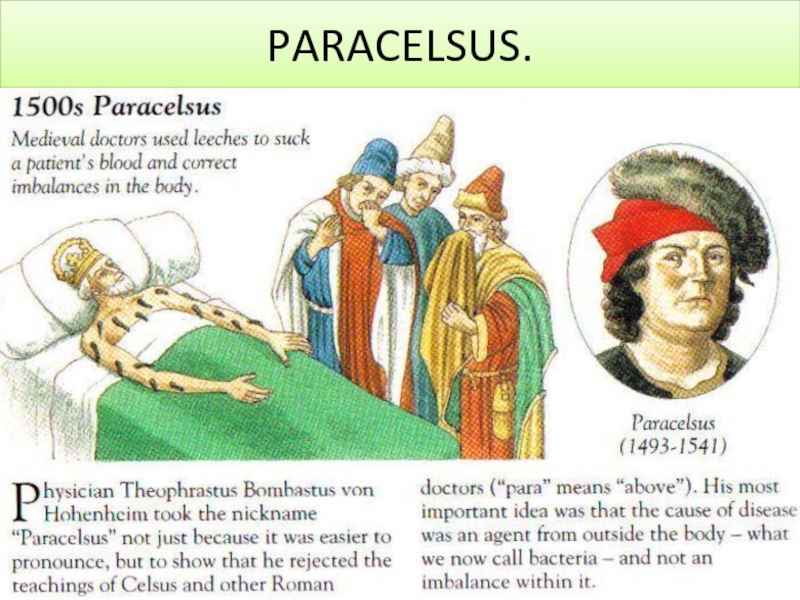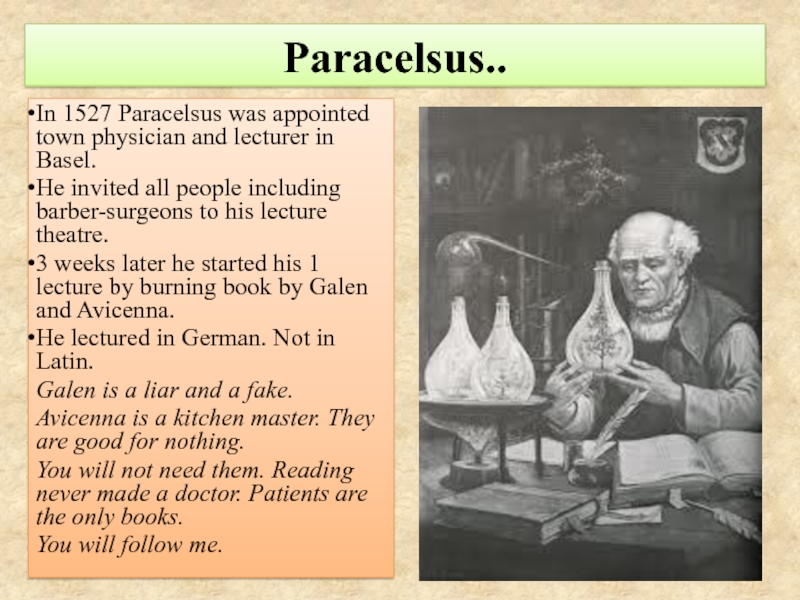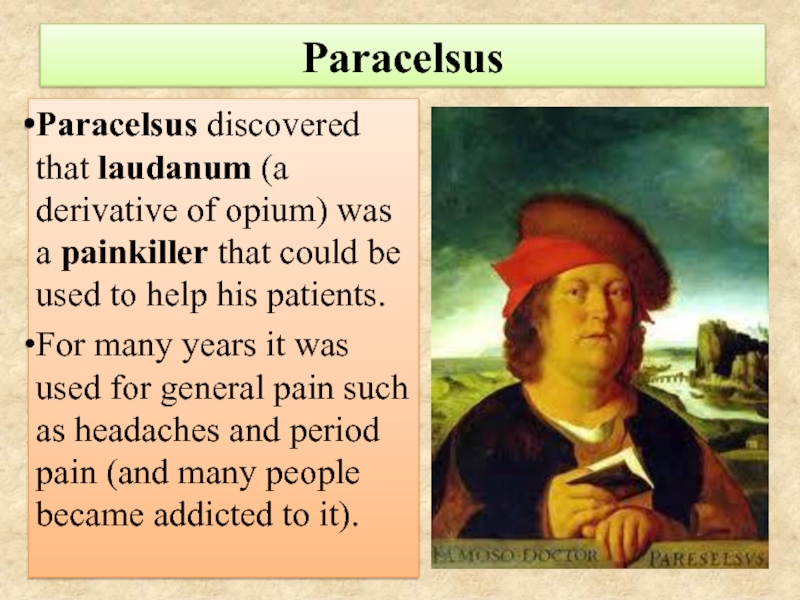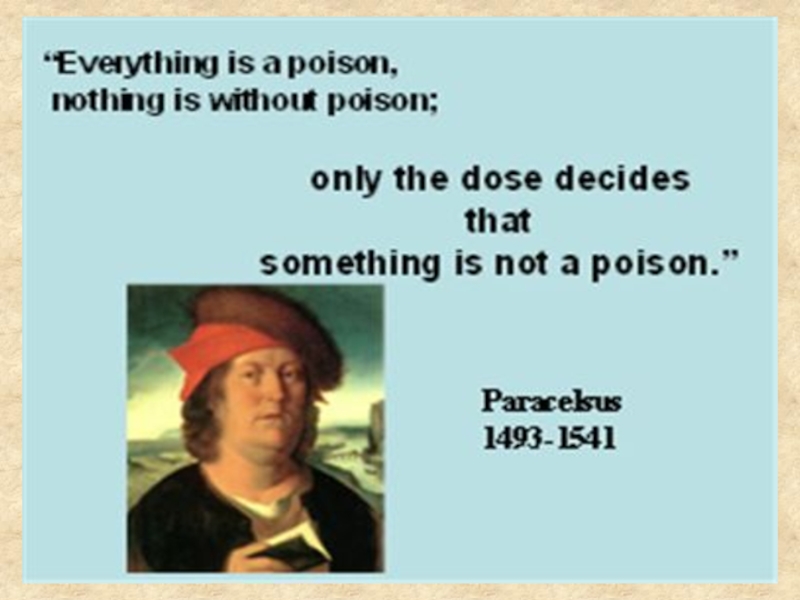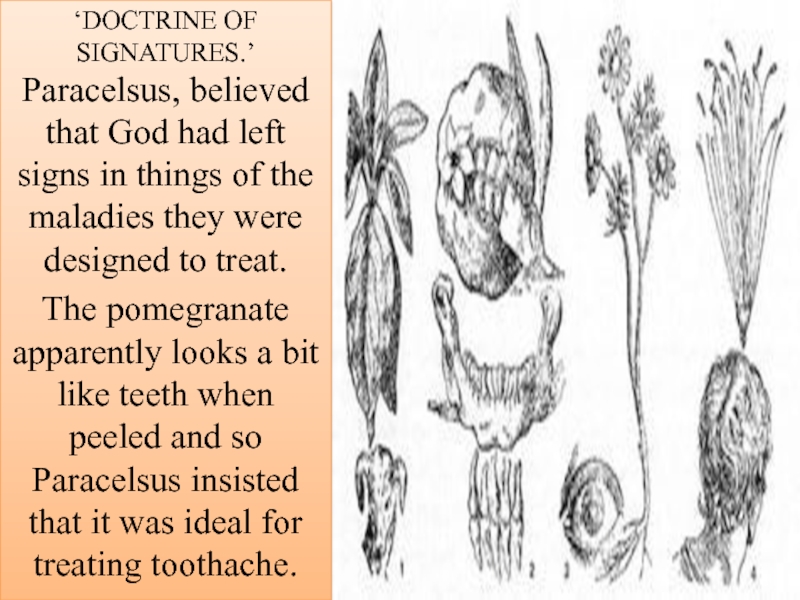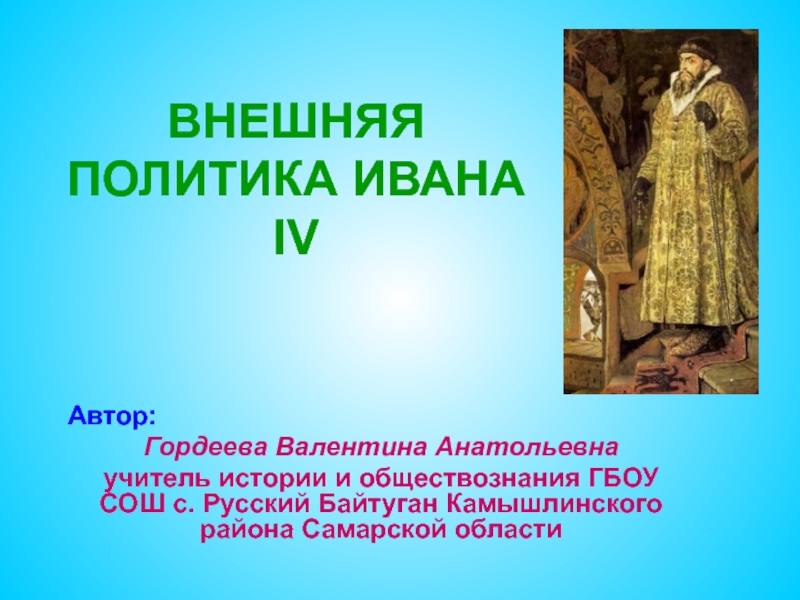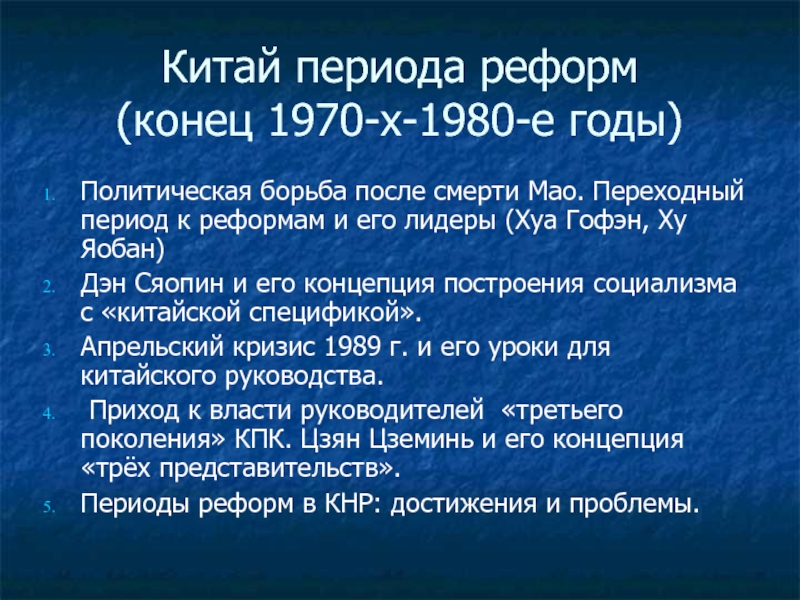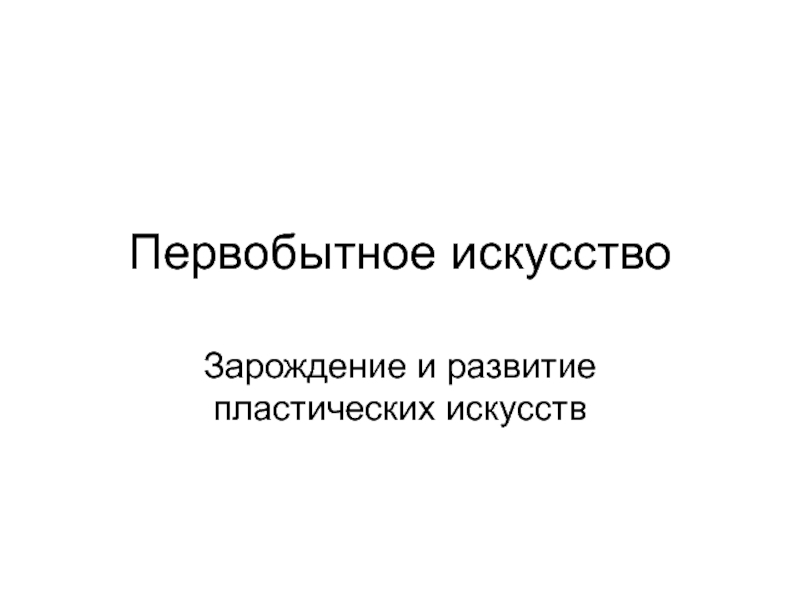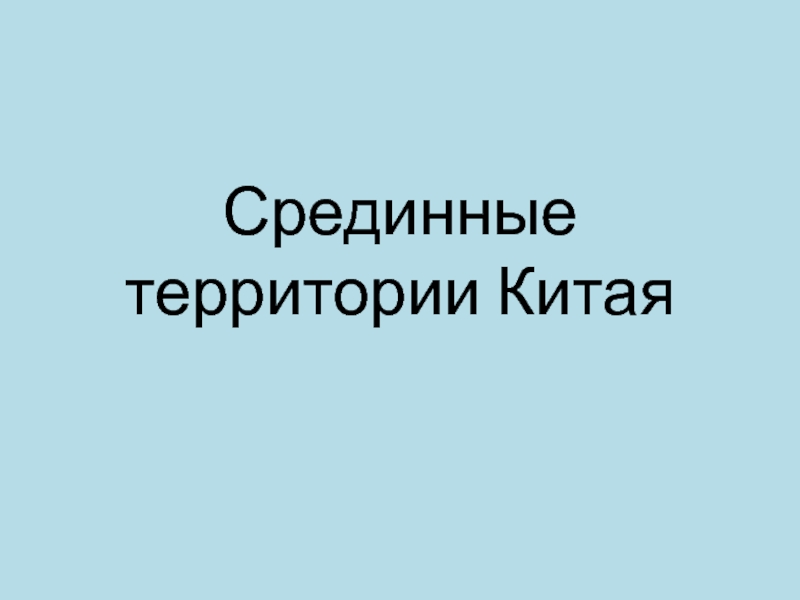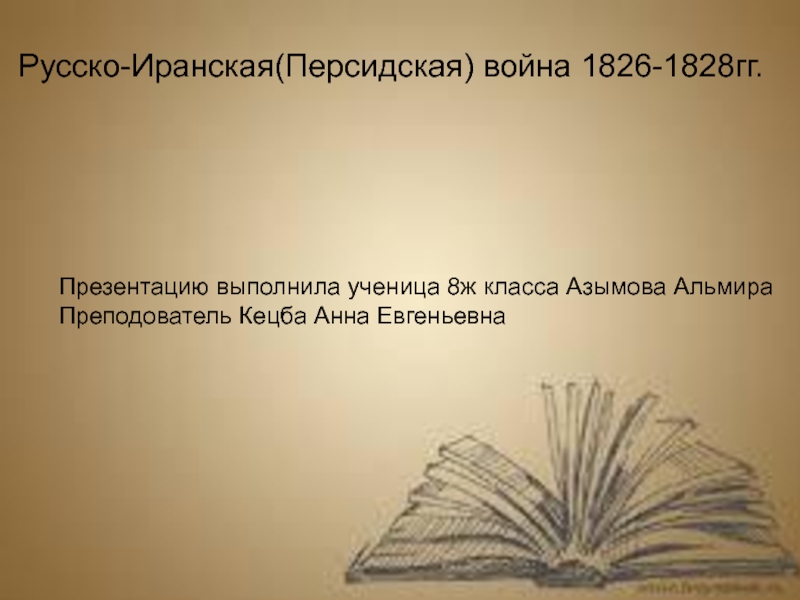- Главная
- Разное
- Дизайн
- Бизнес и предпринимательство
- Аналитика
- Образование
- Развлечения
- Красота и здоровье
- Финансы
- Государство
- Путешествия
- Спорт
- Недвижимость
- Армия
- Графика
- Культурология
- Еда и кулинария
- Лингвистика
- Английский язык
- Астрономия
- Алгебра
- Биология
- География
- Детские презентации
- Информатика
- История
- Литература
- Маркетинг
- Математика
- Медицина
- Менеджмент
- Музыка
- МХК
- Немецкий язык
- ОБЖ
- Обществознание
- Окружающий мир
- Педагогика
- Русский язык
- Технология
- Физика
- Философия
- Химия
- Шаблоны, картинки для презентаций
- Экология
- Экономика
- Юриспруденция
Medicine of middle ages and renaissance презентация
Содержание
- 1. Medicine of middle ages and renaissance
- 2. PLAN. Western Europe in the Middle Age
- 3. People use the phrase “Middle Ages” to
- 4. The Early Middle Ages are also known
- 5. Around 500 AD, hoards of Goths, Vikings,
- 6. The whole area broke up into a
- 7. Scientific theories were not exchanged - poor
- 8. Medical stagnation in Europe Much medical
- 9. Origin of Disease and Treatment Sickness –
- 10. Origin of Disease and Treatment The planets
- 11. Health care givers: There were many people
- 12. The Christian hospices were the first
- 13. The Rise of the Universities
- 14. The Rise of the Universities 1088 -
- 15. The Black Death
- 16. The Black Death The symptoms of the
- 17. The Black Death In 1347-9 the Black
- 18. Surgery Cauterizing, bandaging, bleeding, and cupping
- 19. Treatment Diet was thought extremely important in
- 20. Arabic Medicine
- 21. The contribution of Arabists. They were
- 22. Methodology and Treatment Arabist practitioners used essentially
- 23. Surgery The most common surgical technique was
- 24. Avicenna When only 21, he wrote a
- 25. MEDICINE OF THE RENAISSANCE
- 26. Renaissance means 'rebirth'. The beginning of the
- 27. SIX KEY CHANGES Governments were strong
- 28. SIX KEY CHANGES Artists insisted that
- 29. SIX KEY CHANGES Revival of learning.
- 30. SIX KEY CHANGES The invention of
- 31. SIX KEY CHANGES The discovery of
- 32. SIX KEY CHANGES The invention of new
- 33. SICKNESS AND MEDICINE IN THE RENAISSANCE ..
- 34. People died from a wide variety of
- 35. Syphilis Epidemic New diseases appeared. Syphilis and
- 36. Attempts to treat syphilis were probably deliberately
- 37. Plague also remained one of the biggest takers of human life.
- 38. Physicians visited plague patients wearing beaks stuffed
- 39. Most people were treated by:
- 40. Physicians favored the classic remedies of purging
- 41. The most brilliant anatomist was Andreas
- 42. THE TABULAE SEX In 1538 Vesalius published
- 43. On the Fabric of the Human Body
- 44. On the Fabric of the Human Body
- 45. WILLIAM HARVEY Was born in 1578. Studied
- 46. 1616 He calculated that it was impossible
- 47. He showed that too much blood leaves
- 48. Thanks to the labors of men like
- 49. Renaissance surgery Ambroise Paré changed people's ideas about
- 50. Ambroise Pare In 1533 Pare went to
- 51. In 1536 he discovered by chance that wounds healed
- 52. Physicians were also increasingly open to new
- 53. PARACELSUS.
- 54. Paracelsus.. In 1527 Paracelsus was appointed town
- 55. Paracelsus Paracelsus discovered that laudanum (a derivative of opium)
- 57. ‘DOCTRINE OF SIGNATURES.’ Paracelsus, believed that God
- 58. Thank you for your attention!
Слайд 2PLAN.
Western Europe in the Middle Age
Beliefs about causes of diseases
Surgery
and Anatomy
Public Health
The Black Death
Six key changes of Renaissance.
Sickness and medicine in Renaissance.
Syphilis epidemic.
Public Health
The Black Death
Six key changes of Renaissance.
Sickness and medicine in Renaissance.
Syphilis epidemic.
Слайд 3People use the phrase “Middle Ages” to describe Europe between the
fall of Rome in 476 AD and the beginning of the Renaissance in the 14th century (1453).
Слайд 4The Early Middle Ages are also known as the Dark Ages.
No
scientific accomplishments, no great art produced, no great leaders born.
Слайд 5Around 500 AD, hoards of Goths, Vikings, Vandals and Saxons, often
collectively referred to as "Barbarians", invaded much of Western Europe.
Слайд 6The whole area broke up into a large number of tiny
fiefdoms - territories run by feudal lords.
The feudal lord literally owned his peasants.
These fiefdoms had no public health systems, universities or centers of excellence.
The feudal lord literally owned his peasants.
These fiefdoms had no public health systems, universities or centers of excellence.
Слайд 7Scientific theories were not exchanged - poor communication.
The only places
for learning and studying - monasteries.
In many places only monks knew how to read and write.
Greek and Roman medical records and literature disappeared.
In many places only monks knew how to read and write.
Greek and Roman medical records and literature disappeared.
Слайд 8Medical stagnation in Europe
Much medical knowledge from the Ancient world was
lost.
The quality of medical practitioners was poor.
The Catholic Church did not allow corpses to be dissected.
People were encouraged to pray and fear of not doing as they were told by Church teachings.
The quality of medical practitioners was poor.
The Catholic Church did not allow corpses to be dissected.
People were encouraged to pray and fear of not doing as they were told by Church teachings.
Слайд 9Origin of Disease and Treatment
Sickness – punishment for a sin or
a test of faith.
Sole appropriate response - to suffer.
Possible cure -undeserved and unpredictable intervention of God.
Sole appropriate response - to suffer.
Possible cure -undeserved and unpredictable intervention of God.
Слайд 10Origin of Disease and Treatment
The planets were also responsible for disease
– so doctors were good at astrology and astronomy.
Слайд 11Health care givers:
There were many people to go to for diagnosis
and treatment:
doctors (very expensive),
monks from the local monastery,
apothecaries ( people who sold herbs and drugs),
local wise men and women.
doctors (very expensive),
monks from the local monastery,
apothecaries ( people who sold herbs and drugs),
local wise men and women.
Слайд 12 The Christian hospices were the first ever to be devoted
to long-term support of the diseased, poor, and downtrodden.
Enthusiasm, charity, and good cheer sustained those in charge, often women of "good birth“.
Enthusiasm, charity, and good cheer sustained those in charge, often women of "good birth“.
Слайд 13The Rise of the Universities
The first organized medical school
in Europe was established at Salerno, in southern Italy in 11 century.
Salerno admitted women as medical students.
Salerno admitted women as medical students.
Слайд 14The Rise of the Universities
1088 - University of Bologna
1220 - University
of Montpellier
1222 - University of Padua
1425 - University of Leuven
1222 - University of Padua
1425 - University of Leuven
Слайд 16The Black Death
The symptoms of the Black Death were terrible and
swift:
Painful swellings (buboes) of the lymph nodes
A bubo was at first a red color. The bubo then turned a dark purple color, or black.
Other symptoms of the Black Death included:
a very high fever
delirium
the victim begins to vomit
muscular pains
bleeding in the lungs
mental disorientation
Victims only lived between 2 -4 days after contracting the deadly disease
Painful swellings (buboes) of the lymph nodes
A bubo was at first a red color. The bubo then turned a dark purple color, or black.
Other symptoms of the Black Death included:
a very high fever
delirium
the victim begins to vomit
muscular pains
bleeding in the lungs
mental disorientation
Victims only lived between 2 -4 days after contracting the deadly disease
Слайд 17The Black Death
In 1347-9 the Black Death came to Eastern Europe
and spread to the west.
The crowded, dirty living conditions of the English cities led to the rapid spread of the disease.
Between 1348 and 1350, the Black Death killed about 30 - 40% of the population of England which was estimated to be about 5 to 6 million.
The crowded, dirty living conditions of the English cities led to the rapid spread of the disease.
Between 1348 and 1350, the Black Death killed about 30 - 40% of the population of England which was estimated to be about 5 to 6 million.
Слайд 18Surgery
Cauterizing, bandaging, bleeding, and cupping was done by untrained folk
doctors, laymen, and charlatans.
Nevertheless some outstanding physicians practiced surgery and wrote about it.
Nevertheless some outstanding physicians practiced surgery and wrote about it.
Слайд 19Treatment
Diet was thought extremely important in the treatment of illness.
General reliance
was placed on broths, milk, and eggs.
Plant materials were most often used in the preparation of digestives, laxatives, emetics, diuretics, diaphoretics, styptics, and the like.
The most frequently used medication was theriac,
( thought especially effective against poisons).
Plant materials were most often used in the preparation of digestives, laxatives, emetics, diuretics, diaphoretics, styptics, and the like.
The most frequently used medication was theriac,
( thought especially effective against poisons).
Слайд 21The contribution of Arabists.
They were also responsible for the establishment
of pharmacy and chemistry as sciences.
Methods of extracting and preparing medicines were brought to a high art.
Arabist techniques of distillation, crystallization, solution, sublimation, reduction, and calcination.
Alkali, alcohol, alembic, and elixir…
Methods of extracting and preparing medicines were brought to a high art.
Arabist techniques of distillation, crystallization, solution, sublimation, reduction, and calcination.
Alkali, alcohol, alembic, and elixir…
Слайд 22Methodology and Treatment
Arabist practitioners used essentially the same methods as the
Greeks and Romans.
Diagnosis was based on six criteria: the patient's behavior; the excreta; the other effluvia from the body; swellings; the character of pain; and the location of pain.
The properties of the pulse were also carefully noted.
Diagnosis was based on six criteria: the patient's behavior; the excreta; the other effluvia from the body; swellings; the character of pain; and the location of pain.
The properties of the pulse were also carefully noted.
Слайд 23Surgery
The most common surgical technique was cauterization, which he used for
both internal and external diseases.
Anesthesia by means of a sponge saturated in a narcotic acid held to the nose and mouth was widespread.
Anesthesia by means of a sponge saturated in a narcotic acid held to the nose and mouth was widespread.
Слайд 24Avicenna
When only 21, he wrote a scientific encyclopedia.
His principal contribution was
as a compiler and commentator.
The most renowned of his approximately one hundred books was The Canon
(Al-Qanun).
He suggested the communicable nature of tuberculosis.
The most renowned of his approximately one hundred books was The Canon
(Al-Qanun).
He suggested the communicable nature of tuberculosis.
Слайд 26Renaissance means 'rebirth'.
The beginning of the Renaissance is dated from AD
1453, when the fall of Constantinople drove many scholars with knowledge of Greek and Roman learning westwards to about 1750.
Слайд 27SIX KEY CHANGES
Governments were strong and rich.
The economy boomed and trade
prospered.
People could afford doctors.
People could afford doctors.
Слайд 28SIX KEY CHANGES
Artists insisted that art had to be based on
the most accurate observation possible.
This led them to study the body and visit dissections , and improved
knowledge of anatomy
This led them to study the body and visit dissections , and improved
knowledge of anatomy
Слайд 29SIX KEY CHANGES
Revival of learning.
Beginning of scientific method - conducting an experiment,
collecting observations, then coming to a conclusion.
This was vital for the development of medicine.
This was vital for the development of medicine.
Слайд 30SIX KEY CHANGES
The invention of the
printing press allowed new ideas to spread
more quickly around Europe.
Слайд 31SIX KEY CHANGES
The discovery of America by Columbus meant that new
foods and medicines were brought back from the New World.
Слайд 32SIX KEY CHANGES
The invention of new weapons
(especially gunpowder)
led to soldiers getting
different sorts of wounds, which battlefield doctors had to deal with.
Слайд 33SICKNESS AND MEDICINE IN THE RENAISSANCE
..
In western societies today the infant
mortality rate is around 9 per 1000 live births.
In the 1500s it was about 150-200 per 1000 live births.
Moreover, about 50% of children were dead by the age of 15.
Cities tended to be the least healthy, with highly insanitary conditions and people living in close proximity.
In the 1500s it was about 150-200 per 1000 live births.
Moreover, about 50% of children were dead by the age of 15.
Cities tended to be the least healthy, with highly insanitary conditions and people living in close proximity.
Слайд 34People died from a wide variety of ailments: smallpox, plague, dysentery,
diphtheria, tuberculosis, scarlet fever, whooping cough, influenza, and pneumonia.
The image to the right, from the 1500s, fittingly shows death conquering all: no-one was immune, even if the rich and well-housed had an advantage.
The image to the right, from the 1500s, fittingly shows death conquering all: no-one was immune, even if the rich and well-housed had an advantage.
Слайд 35Syphilis Epidemic
New diseases appeared.
Syphilis and typhus killed many millions.
Syphilis appeared
in the early 1490s.
‘Syphilis’, an inexplicably transmitted, devastating, and incurable epidemic (at that time) was spreading wildly, affecting an alarming population.
The name ‘Syphilis’ is derived from Fracastoro's 1530 larger-than-life poem in three books.
‘Syphilis’, an inexplicably transmitted, devastating, and incurable epidemic (at that time) was spreading wildly, affecting an alarming population.
The name ‘Syphilis’ is derived from Fracastoro's 1530 larger-than-life poem in three books.
Слайд 36Attempts to treat syphilis were probably deliberately harsh, sufferers need do
penance as well as receive mercury .
On the right is an image of a small cell in which a patient would endure the torment of isolation, heat and mercury vapor. The caption says ‘for a moment of pleasure, a thousand of suffering’.
On the right is an image of a small cell in which a patient would endure the torment of isolation, heat and mercury vapor. The caption says ‘for a moment of pleasure, a thousand of suffering’.
Слайд 38Physicians visited plague patients wearing beaks stuffed with herbs in an
attempt to dry the air thought to cause plague.
Secular and religious explanations co-existed.
Holy processions
Secular and religious explanations co-existed.
Holy processions
Слайд 39Most people were treated by:
themselves,
priests,
white
witches, who recommended simple herbal remedies
or by especially adult women who had recipe books of family cures.
Robert Burton, explained in 1621. ‘Tis a common practice of some men to go first to a Witch, and then to a Physician; if one cannot, the other shall: if they cannot bend Heaven, they will try Hell.’
or by especially adult women who had recipe books of family cures.
Robert Burton, explained in 1621. ‘Tis a common practice of some men to go first to a Witch, and then to a Physician; if one cannot, the other shall: if they cannot bend Heaven, they will try Hell.’
Слайд 40Physicians favored the classic remedies of purging and blood letting), changes
of diet, light exercise, bathing in sweet waters.
Observation:
checking the patient’s pulse
inspecting his or her urine and stools
Observation:
checking the patient’s pulse
inspecting his or her urine and stools
Слайд 41 The most brilliant anatomist was Andreas Vesalius. Born in Brussels, Vesalius
studied medicine in Paris and then took up a chair at the University of Padua in Italy.
Слайд 42THE TABULAE SEX
In 1538 Vesalius published the Tabulae sex.
6 large
sheets of drawings.
In some drawings liver had 5 lobes.
One drawing showed 2 lobed liver.
Vesalius was beginning to question what Galen said.
In some drawings liver had 5 lobes.
One drawing showed 2 lobed liver.
Vesalius was beginning to question what Galen said.
Слайд 43On the Fabric of the Human Body
The pictures were drawn from
real human bodies.
Vesalius starts from the outside and works in from skin to bones).
Vesalius corrected some of Galen’s mistakes.
Vesalius starts from the outside and works in from skin to bones).
Vesalius corrected some of Galen’s mistakes.
Слайд 44On the Fabric of the Human Body
4. New way of teaching
– public dissections backed up with pictures.
5. It was new type of book.
6. Vesalius’ book was printed(not hand written) so there were lots of copies. Soon each medical school in Europe had a copy.
5. It was new type of book.
6. Vesalius’ book was printed(not hand written) so there were lots of copies. Soon each medical school in Europe had a copy.
Слайд 45WILLIAM HARVEY
Was born in 1578.
Studied medicine at Padua 1598-1602
Fabricius taught him
anatomy
Then worked in London as a doctor and later as lecturer in anatomy at the Royal College of Surgeons
From 1618 was physician to James I and Charles I
Then worked in London as a doctor and later as lecturer in anatomy at the Royal College of Surgeons
From 1618 was physician to James I and Charles I
Слайд 461616
He calculated that it was impossible for the blood to be
burned up in the muscles (as Galen had claimed).
1628
He published 'Anatomical Account of the Motion of the Heart and Blood', which scientifically proved the principle of the circulation of the blood - the heart acting as a pump and the blood returning via the lungs This book marked the end of Galen's influence on anatomy.
1628
He published 'Anatomical Account of the Motion of the Heart and Blood', which scientifically proved the principle of the circulation of the blood - the heart acting as a pump and the blood returning via the lungs This book marked the end of Galen's influence on anatomy.
Слайд 47He showed that too much blood leaves the left of the
heart in any given time to be fully burnt up by the body and for it to be replaced by the liver.
He also performed a famous experiment involving ligating the arm so as to allow some movement of arterial blood but no movement of venous blood.
This allowed him to demonstrate that veins and arteries are indeed linked together: they are part of a single circulatory system.
He also performed a famous experiment involving ligating the arm so as to allow some movement of arterial blood but no movement of venous blood.
This allowed him to demonstrate that veins and arteries are indeed linked together: they are part of a single circulatory system.
Слайд 48Thanks to the labors of men like Vesalius and Harvey, anatomy
had become a far more prestigious aspect of medical training
Слайд 49Renaissance surgery
Ambroise Paré changed people's ideas about surgery.
Pare, son of a
barber-surgeon, was born in 1510 in France.
Barber-surgeons were the lowest of the low in the 16 century.
When Pare died aged 80 he had been surgeons of 4 successive kings of France
And he was the most famous surgeon of his age.
Barber-surgeons were the lowest of the low in the 16 century.
When Pare died aged 80 he had been surgeons of 4 successive kings of France
And he was the most famous surgeon of his age.
Слайд 50Ambroise Pare
In 1533 Pare went to Paris to train as barber.
In
1534 he became surgeon of Hotel-Dieu .
In 1537 he left and joined the French army as a military surgeon.
In 1545 he published his first book on the treatment of gunshot wounds , Method of Treating Wounds.
It was written in French, not Latin!
In 1537 he left and joined the French army as a military surgeon.
In 1545 he published his first book on the treatment of gunshot wounds , Method of Treating Wounds.
It was written in French, not Latin!
Слайд 51In 1536 he discovered by chance that wounds healed better if they were
treated with a 'soothing digestive' (boiled poultice) of yolks and rose oil.
He used catgut ligatures to tie arteries during amputations instead of cauterising the wound.
In 1575 he published his 'Apology and Treatise', with changes to the way surgeons treated wounds and amputations.
He used catgut ligatures to tie arteries during amputations instead of cauterising the wound.
In 1575 he published his 'Apology and Treatise', with changes to the way surgeons treated wounds and amputations.
Слайд 52Physicians were also increasingly open to new remedies.
In the early
1500s a leading herbal described 258 known plants.
Under a century later the standard botanical text told of around 6000 different plants!
Under a century later the standard botanical text told of around 6000 different plants!
Слайд 54Paracelsus..
In 1527 Paracelsus was appointed town physician and lecturer in Basel.
He
invited all people including barber-surgeons to his lecture theatre.
3 weeks later he started his 1 lecture by burning book by Galen and Avicenna.
He lectured in German. Not in Latin.
Galen is a liar and a fake.
Avicenna is a kitchen master. They are good for nothing.
You will not need them. Reading never made a doctor. Patients are the only books.
You will follow me.
3 weeks later he started his 1 lecture by burning book by Galen and Avicenna.
He lectured in German. Not in Latin.
Galen is a liar and a fake.
Avicenna is a kitchen master. They are good for nothing.
You will not need them. Reading never made a doctor. Patients are the only books.
You will follow me.
Слайд 55Paracelsus
Paracelsus discovered that laudanum (a derivative of opium) was a painkiller that could be used
to help his patients.
For many years it was used for general pain such as headaches and period pain (and many people became addicted to it).
For many years it was used for general pain such as headaches and period pain (and many people became addicted to it).
Слайд 57‘DOCTRINE OF SIGNATURES.’ Paracelsus, believed that God had left signs in
things of the maladies they were designed to treat.
The pomegranate apparently looks a bit like teeth when peeled and so Paracelsus insisted that it was ideal for treating toothache.
The pomegranate apparently looks a bit like teeth when peeled and so Paracelsus insisted that it was ideal for treating toothache.
